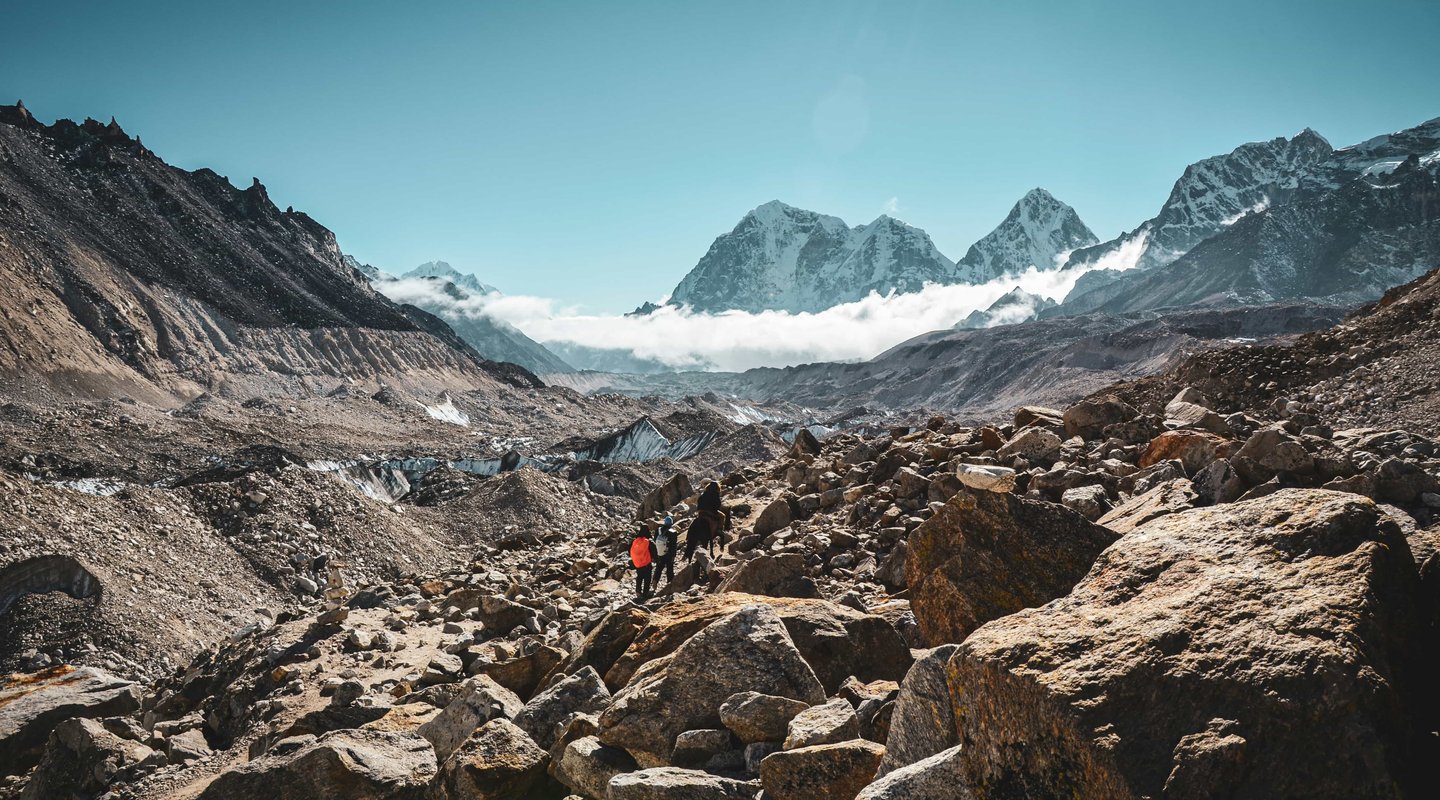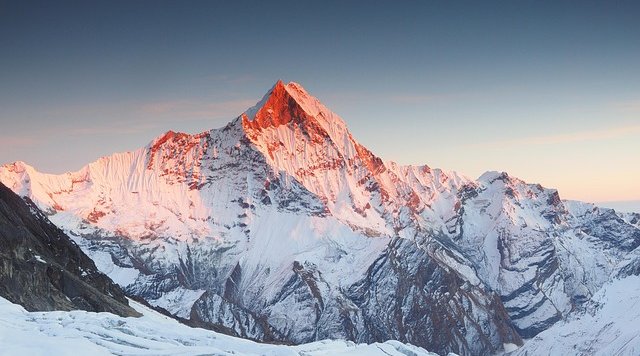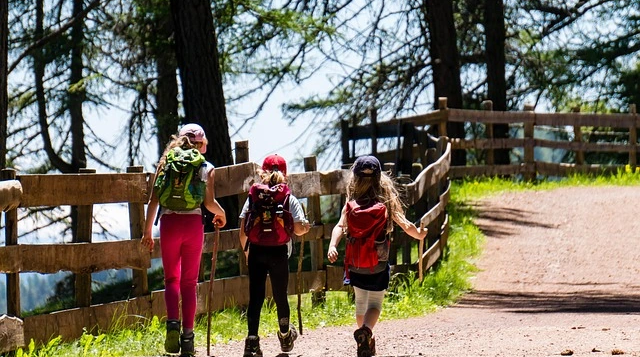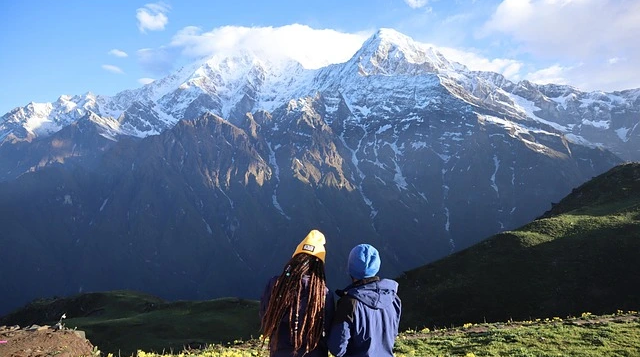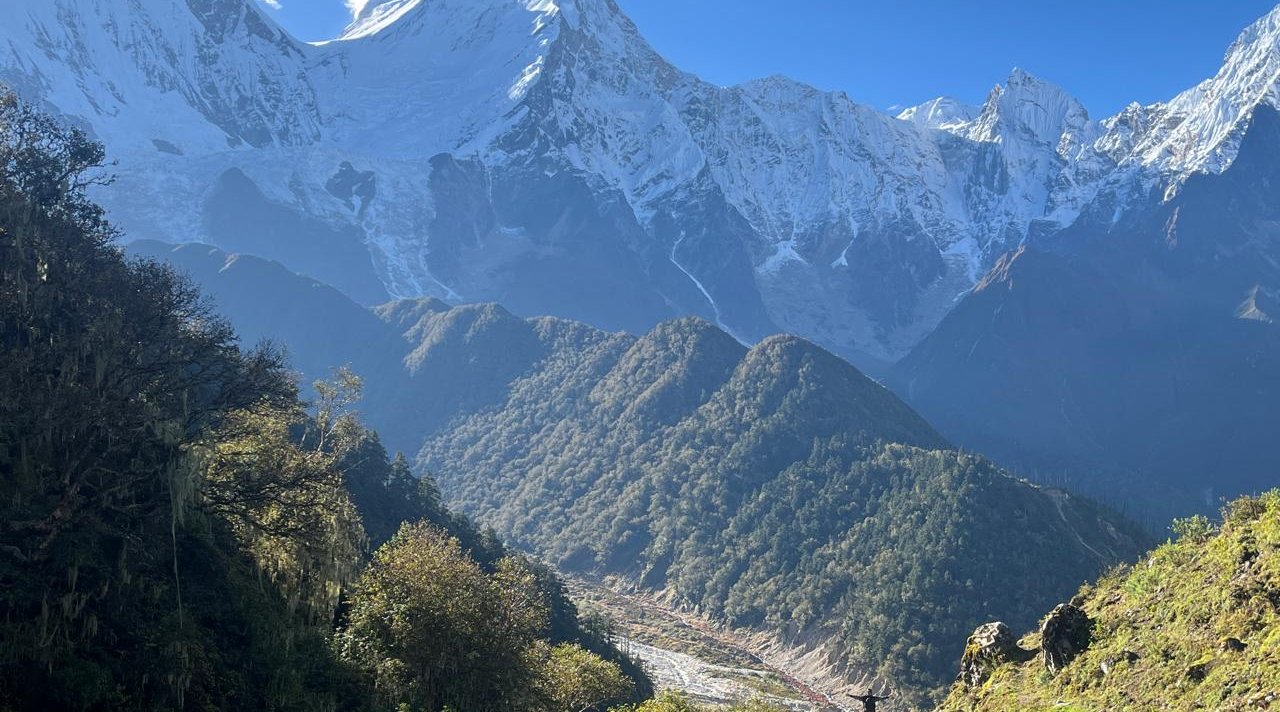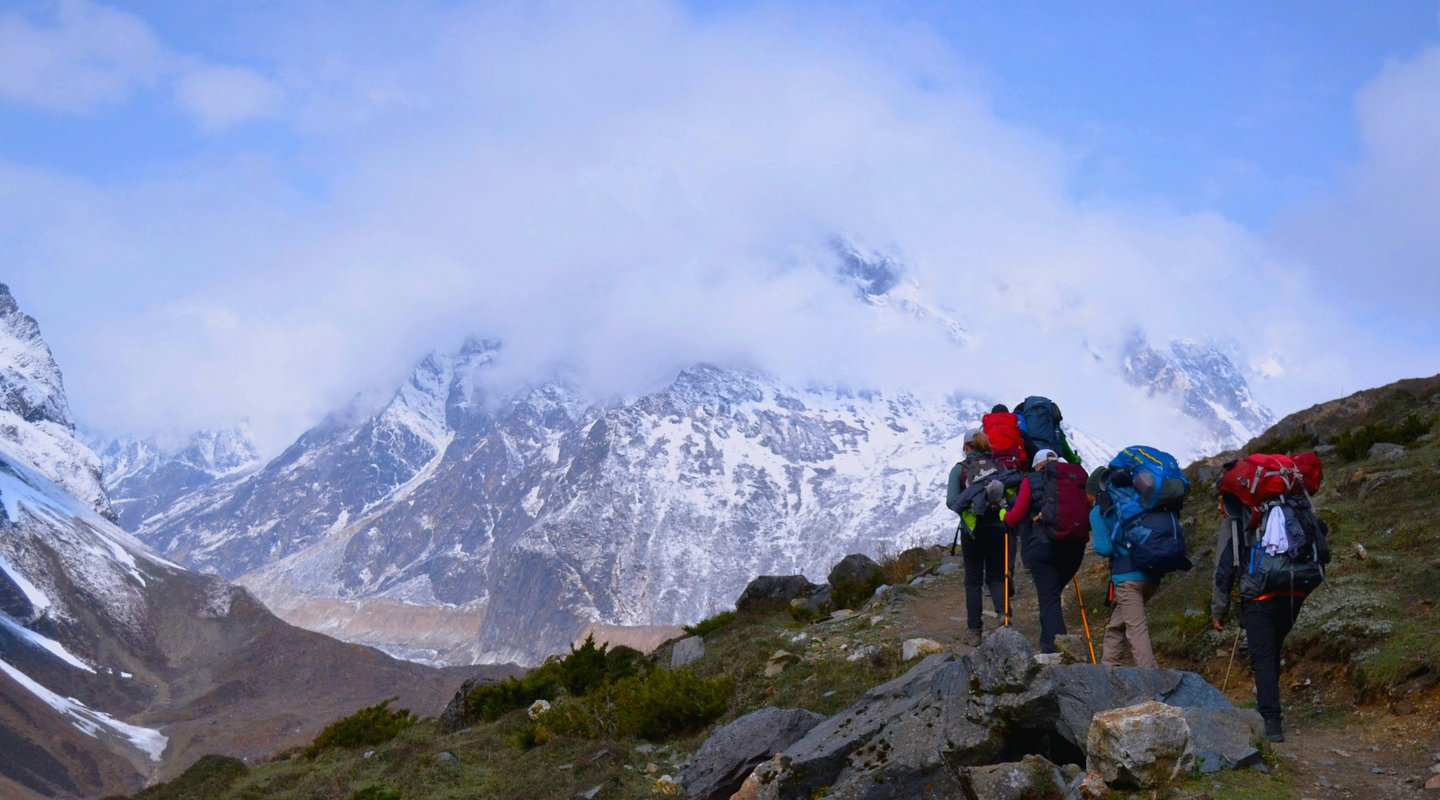Picture this: you're bouncing along a dusty mountain road, prayer flags fluttering overhead, as your jeep winds through authentic Sherpa villages toward the world's highest mountain. This is the Everest Base Camp Trek by Road FAQs guide you've been searching for—answering every burning question about choosing the overland adventure to EBC.
First-timers often feel overwhelmed by conflicting advice online. Should you fly or drive? What's the real difficulty level? How much will it actually cost? This comprehensive guide tackles these concerns head-on, providing clear answers based on real trekking experiences.
The road to EBC offers something special. You'll gain altitude gradually, reducing altitude sickness risks while immersing yourself in local culture from day one. Let's dive into everything you need to know about this incredible journey.
Why Choose the Everest Base Camp Trek by Road?
The overland approach transforms your trek into a complete cultural journey. You'll understand why thousands choose wheels over wings each year.
What Is the Road to EBC?
The Everest Base Camp overland trek begins with an adventurous drive from Kathmandu. Your journey takes you through winding mountain roads to either Salleri or Phaplu, traditional starting points for the road-based trek.
The road journey includes:
- 8-10 hour scenic drive through Nepal's Middle Hills
- Gradual elevation gain from 1,400m to 2,800m
- Stops at local markets and viewpoints
- Authentic village experiences along the way
- Natural acclimatization process beginning immediately
This jeep to EBC trek approach adds 2-3 extra days to your itinerary. However, these days aren't just transit—they're part of the adventure. You'll witness Nepal's incredible diversity, from terraced farmlands to pine forests.
The drive to Everest Base Camp starting points follows the Arniko Highway initially. Then you'll branch onto smaller mountain roads that test your driver's skills. Don't worry—local drivers navigate these routes daily with impressive expertise.
Road vs Flight to EBC: Key Differences
Understanding road vs flight to EBC helps you make an informed choice. Each option suits different traveler styles and priorities.
Road Trek Advantages:
- No weather-dependent flight cancellations
- Better acclimatization through gradual ascent
- Cultural immersion from the start
- Cost savings of $300-400 on flights
- Flexible departure times
- Scenic overland journey experience
Flight Trek Benefits:
- Saves 2-3 days of travel time
- Thrilling mountain flight experience
- Direct access to higher elevations
- Less physical vehicle travel
- Quicker return to Kathmandu
The benefits of EBC trek by road become clear during peak season. While others wait days for cleared weather at Lukla airport, road trekkers proceed regardless of clouds. The advantages of overland to EBC include experiencing Nepal's geographic diversity firsthand.
Many don't realize the risks of Lukla flight extend beyond the famous landing. Weight restrictions, frequent cancellations, and altitude jumps from 1,400m to 2,860m in 45 minutes challenge many trekkers. The road approach eliminates these concerns entirely.
Planning & Preparation FAQs
Proper planning transforms challenges into adventures. Let's address the key preparation questions every first-timer asks.
When Is the Best Season for EBC Trek by Road?
The best season for EBC trek by road typically falls in spring (March-May) and autumn (September-November). However, the road approach offers more flexibility than flight-dependent treks.
Spring Season (March-May):
- Rhododendron blooms create stunning scenery
- Warming temperatures make camping comfortable
- Climbing season excitement at Base Camp
- Roads dry and well-maintained
- Afternoon clouds may obscure views by late April
Autumn Season (September-November):
- Crystal-clear mountain views
- Stable weather patterns
- Post-monsoon freshness
- Perfect road conditions
- Cooler temperatures require warm gear
The optimal time to drive to Everest Base Camp trek is early October or late March. You'll enjoy perfect weather while avoiding peak crowds. The Everest Base Camp trek timing by vehicle becomes crucial during monsoon (June-August) when roads face landslide risks.
Shoulder season benefits:
- Fewer crowds on trails
- Better accommodation availability
- Negotiable prices
- More authentic local interactions
- Peaceful mountain experiences
The Everest Base Camp by road in shoulder season offers exceptional value. Consider late November or early March for the perfect balance of good weather and solitude.
What Should I Pack for the Trek?
Your packing list for EBC trek makes or breaks your comfort. The road approach allows slightly more luggage flexibility since you're not restricted by flight weight limits.
Essential Clothing:
- Base layers (merino wool or synthetic)
- Insulating mid-layers (fleece or down jacket)
- Waterproof outer shell jacket and pants
- Trekking pants (2-3 pairs)
- Quick-dry t-shirts (3-4)
- Warm hat and sun hat
- Gloves (liner and insulated)
- Quality trekking socks (5-6 pairs)
Footwear & Accessories:
- Broken-in trekking boots
- Camp shoes or sandals
- Sunglasses (UV protection essential)
- Headlamp with extra batteries
- Trekking poles (highly recommended)
- Day pack (25-30L)
- Duffel bag for porters (60-80L)
Health & Safety Items:
- First aid kit with blister treatment
- Altitude sickness medication
- Water purification tablets or filter
- Sunscreen (SPF 50+)
- Lip balm with SPF
- Personal medications
- Hand sanitizer
The seasonal weather for EBC road journey influences packing choices. Winter requires four-season sleeping bags, while spring allows lighter options. Always pack layers—mountain weather changes rapidly.
How Fit Do I Need to Be?
The physical fitness for EBC beginners question causes unnecessary anxiety. You don't need to be an athlete, but basic fitness helps enormously.
Recommended Fitness Level:
- Walk 5-6 hours carrying a daypack
- Climb stairs for 30 minutes continuously
- Complete a 15km hike with elevation gain
- Maintain steady pace at moderate intensity
- Recover reasonably overnight
Training Program (3 months before):
- Week 1-4: Build base with 30-45 minute daily walks
- Week 5-8: Add hills and stairs, increase to 1 hour
- Week 9-12: Weekend hikes with full daypack
- Include strength training for legs and core
- Practice with trekking poles
The EBC trek for beginners becomes manageable with preparation. The road approach's gradual altitude gain gives your body more adaptation time. This natural acclimatization reduces physical stress significantly.
Remember: trek your own pace. The journey isn't a race. Most struggle comes from rushing rather than fitness limitations.
Cost & Logistics FAQs
Understanding costs helps you budget realistically. The road trek offers several financial advantages over flying.
How Much Does the EBC Trek by Road Cost?
The budget for EBC trek by road varies based on comfort preferences and group size. Here's a realistic breakdown for 2024-2025:
Basic Costs (per person):
- Road transport to Salleri/Phaplu: $50-100
- Permits (TIMS & Sagarmatha): $50
- Accommodation (tea houses): $5-10/night × 14 nights = $70-140
- Meals: $25-30/day × 14 days = $350-420
- Hot showers/charging: $50-80 total
- Porter (optional): $20/day × 14 = $280
- Guide (recommended): $30/day × 14 = $420
- Return transport: $50-100
Total Budget Ranges:
- Budget independent: $600-800
- Comfortable guided: $1,200-1,500
- Premium package: $2,000-2,500
The Everest Base Camp trek cost by road saves $300-400 compared to flying. These savings can upgrade your accommodation or extend your trek. The best weather months for driving to EBC start (October and April) command premium prices—book early for better rates.
What Permits Are Needed for EBC Overland?
The permits for EBC overland remain consistent regardless of your arrival method. You'll need two essential documents:
Required Permits:
- Sagarmatha National Park Entry Permit: $30 (NPR 3,000)
- TIMS Card (Trekkers' Information Management System): $20
Where to Obtain:
- Nepal Tourism Board office in Kathmandu
- Entry point at Monjo (park permit only)
- Through registered trekking agencies
- Online pre-application available
Additional Considerations:
- Carry passport-sized photos (4 copies)
- Bring permit copies as backup
- Keep permits accessible for checkpoints
- Local area permits sometimes required
- Guide/porter documentation if hiring
The permits for EBC trek process is straightforward. Most trekkers obtain everything in Kathmandu before departure. Agencies can arrange permits as part of packages.
What Are the Transport Options to EBC?
The transport options to EBC by road offer flexibility based on budget and comfort preferences.
Public Bus:
- Cost: $10-15 to Salleri
- Duration: 10-12 hours
- Departs early morning from Kathmandu
- Basic but authentic experience
- Stops frequently for local passengers
Shared Jeep:
- Cost: $30-50 per person
- Duration: 8-10 hours
- More comfortable than bus
- Limited luggage space
- Usually 8-10 passengers
Private Vehicle:
- Cost: $300-400 total (split among group)
- Duration: 7-9 hours
- Maximum comfort and flexibility
- Stop anywhere for photos
- Direct route with minimal delays
The EBC trek by road typically starts from Salleri (most common) or Phaplu (slightly higher). Some adventurous trekkers continue driving to Thamdanda, saving a day's walk. However, this aggressive approach reduces acclimatization time.
Trekking Experience FAQs
Understanding daily trail life helps set realistic expectations. The road trek experience differs subtly from the fly-in option.
How Difficult Is the EBC Trek by Road?
The difficulty level of EBC trek rates as moderate to challenging. The road approach reduces overall difficulty through better acclimatization.
Daily Challenges:
- Walking 5-7 hours per day
- Elevation gains of 300-600m daily
- Rocky, uneven trail surfaces
- Suspension bridge crossings
- Cold temperatures above 4,000m
- Basic accommodation facilities
Difficulty Factors:
- Your fitness level and preparation
- Weather conditions during trek
- Pace and rest day planning
- Individual altitude response
- Mental resilience and attitude
The Everest Base Camp trek difficulty peaks between Lobuche and Base Camp. This final push tests everyone with thin air and rocky moraine. However, the EBC trek itinerary by road includes natural acclimatization days.
Difficulty ratings by section:
- Salleri to Namche: Moderate (good trails, gradual ascent)
- Namche to Tengboche: Moderate (some steep sections)
- Tengboche to Dingboche: Moderate-Challenging (altitude effects begin)
- Dingboche to Lobuche: Challenging (thin air, cold)
- Lobuche to EBC: Very Challenging (altitude, terrain)
How Do I Acclimatize for the Trek?
Proper acclimatization for EBC trek prevents altitude sickness and ensures summit success. The road approach provides natural acclimatization advantages.
Acclimatization Strategy:
- Climb high, sleep low principle
- Rest days at Namche (3,440m) and Dingboche (4,410m)
- Hydrate constantly (3-4 liters daily)
- Avoid alcohol and smoking
- Walk slowly and steadily
- Listen to your body's signals
Road Trek Advantage: The Everest Base Camp road trek adds 2-3 days of gradual elevation gain. You'll reach 2,800m by vehicle, then trek from there. This profile reduces altitude shock significantly compared to flying directly to 2,860m.
Acclimatization tips for EBC:
- Take afternoon acclimatization walks
- Don't rush even if feeling strong
- Eat high-calorie meals
- Sleep quality matters—bring earplugs
- Consider Diamox with doctor consultation
- Descend immediately if symptoms worsen
The golden rule: it's better to arrive late than not at all. Your body needs time to produce extra red blood cells for oxygen transport.
What Are Food and Lodging Like?
The food and lodging on EBC road trek surprises many first-timers with its variety and comfort levels.
Tea House Accommodation:
- Twin-bed rooms with basic furnishings
- Shared bathrooms (mostly)
- Thick blankets provided
- Common dining area with heating
- Charging stations (fee required)
- Hot showers available (extra cost)
Food Options:
- Dal Bhat (unlimited refills)
- Pasta, noodles, and rice dishes
- Breakfast items (eggs, porridge, pancakes)
- Soups and stews
- Basic Western food (pizza, burgers)
- Hot drinks (tea, coffee, hot chocolate)
Price Trends: Costs increase with altitude. A meal costing $3 in Salleri might reach $8 at Lobuche. The accommodation on EBC trek becomes more basic at higher elevations too. Expect simpler menus and colder rooms above 4,000m.
Pro tips:
- Dal Bhat offers best value and energy
- Avoid meat above Namche (storage concerns)
- Bring snacks for trail energy
- Garlic soup aids acclimatization
- Order meals early to avoid waiting
Beginner Concerns FAQs
First-time trekkers share common worries. Let's address these concerns with practical, reassuring information.
How Do I Avoid Altitude Sickness on EBC Trek?
Understanding altitude sickness on EBC trek helps prevent serious problems. The road approach naturally reduces risks through gradual ascent.
Prevention Strategies:
- Ascend slowly (300-500m per day above 3,000m)
- Include rest days in itinerary
- Stay hydrated constantly
- Avoid alcohol and sleeping pills
- Eat high-calorie meals
- Consider preventive medication
Early Warning Signs:
- Headache that doesn't respond to painkillers
- Nausea or loss of appetite
- Unusual fatigue or weakness
- Difficulty sleeping
- Dizziness or lightheadedness
The altitude sickness FAQs for EBC always include medication questions. Diamox (Acetazolamide) helps many trekkers, but consult your doctor first. Natural acclimatization remains the best prevention.
Emergency Response:
- Don't ascend with symptoms
- Rest and hydrate at current altitude
- Descend if symptoms worsen
- Use portable oxygen if available
- Evacuate for severe symptoms
- Never ignore body warnings
Remember: altitude sickness affects anyone regardless of fitness. Olympic athletes and couch potatoes face equal risk. The key is ascending gradually and responding promptly to symptoms.
What Are Top Tips for First-Time Trekkers?
These first-time trekker tips for EBC by road come from hundreds of successful beginners:
Physical Preparation:
- Start training 3 months early
- Break in boots completely
- Practice with loaded daypack
- Build mental resilience
- Learn to layer clothing effectively
Practical Wisdom:
- Book accommodation in advance during peak season
- Carry cash (no ATMs above Namche)
- Bring wet wipes for "showers"
- Pack extra batteries (cold drains power)
- Download offline maps
- Learn basic Nepali phrases
Mental Preparation:
- Embrace basic living conditions
- Focus on journey, not destination
- Make friends with fellow trekkers
- Stay positive during challenges
- Celebrate small victories daily
The safety on EBC trek by road improves when you trek with others. Solo trekkers should consider joining groups for company and safety. The social aspect enriches the experience tremendously.
Money-Saving Tips:
- Drink boiled water instead of bottled
- Share porter costs with others
- Eat dal bhat for best value
- Skip unnecessary hot showers
- Charge devices strategically
Is the EBC Trek by Road Safe?
The safety tips for beginners on EBC trek address common concerns about this challenging adventure.
Safety Advantages of Road Trek:
- Gradual acclimatization reduces altitude risks
- No dangerous Lukla flight
- Easier evacuation if needed
- More time to assess fitness
- Flexible itinerary options
General Safety Measures:
- Hire experienced, licensed guides
- Purchase comprehensive travel insurance
- Register with your embassy
- Carry first aid supplies
- Know evacuation procedures
- Stay on marked trails
Common Hazards:
- Altitude sickness (most serious)
- Slips and falls on rocky trails
- Stomach issues from water/food
- Cold-related problems
- Sun exposure at altitude
The EBC trek for beginners becomes safer with proper preparation. Most accidents result from rushing, poor preparation, or ignoring warning signs. The road approach's slower pace naturally promotes safer trekking.
Emergency Protocols:
- Helicopter evacuation available (insurance essential)
- Medical posts at Namche and Pheriche
- Communication available in most villages
- Guide carries emergency equipment
- Clear evacuation routes established
Conclusion
The Everest Base Camp Trek by Road FAQs we've covered should ease your planning anxieties. This overland adventure offers beginners a safer, more culturally rich path to the world's most famous base camp.
The road to EBC transforms a simple trek into a complete Himalayan journey. You'll gain altitude naturally, immerse in authentic culture, and avoid weather-dependent flights. Most importantly, you'll have time to savor every moment of this life-changing adventure.
Whether you're worried about fitness, altitude, or costs, remember that thousands of beginners successfully complete this trek annually. With proper preparation and realistic expectations, you'll join their ranks. The mountains don't care about your experience level—they reward determination and respect.
Ready to begin your Everest adventure? Our comprehensive EBC trek by road guide provides everything needed for a successful journey.
The Everest Base Camp road trek awaits. Your only question should be: when will you start this incredible journey?
Additional FAQs
What month for Everest Base Camp overland trek offers the best value?
Late November and early March provide excellent value. You'll enjoy good weather with significantly fewer crowds and lower prices on accommodation and services.
How does the EBC trek by road compare for solo travelers?
Solo trekkers find the road approach more social since shared transport creates immediate connections. Tea houses along the route welcome independent trekkers, though joining a group improves safety and reduces costs.
What are the main advantages of overland to EBC for photographers?
The gradual journey provides diverse photography opportunities from farmlands to glaciers. You'll capture authentic village life, have more flexibility for sunrise shoots, and avoid the rushed pace of fly-in treks.
Can children do the EBC trek by road?
Children aged 10+ with good fitness can complete the trek. The road approach's gradual acclimatization suits families better. Choose April or October for best weather and ensure proper gear sizing.
What happens if road conditions prevent reaching Salleri?
Flexible itineraries accommodate delays. Alternative starting points like Jiri or Phaplu remain accessible. Local guides adapt routes based on conditions, ensuring you reach your goal safely.
Is altitude sickness less common on the road trek?
Yes, statistics show lower altitude sickness rates for road trekkers. The gradual ascent from 1,400m to 2,800m by vehicle provides crucial pre-acclimatization that flying misses.
What's the latest time to start the trek and avoid darkness?
Start walking by 8 AM to reach destinations by 3-4 PM. Shorter winter days require 7 AM starts. The afternoon clouds and temperature drops make early starts essential year-round.

